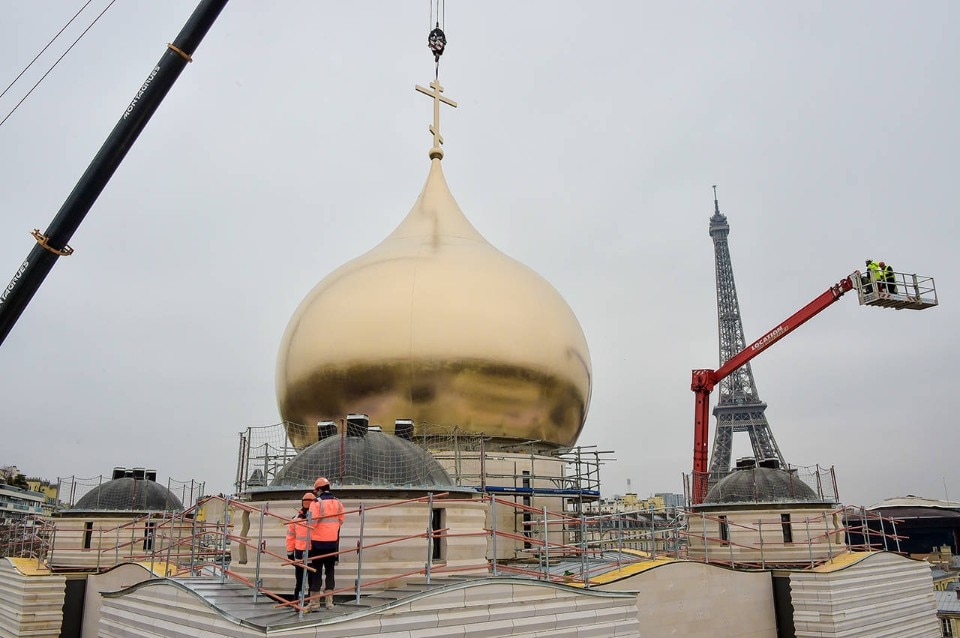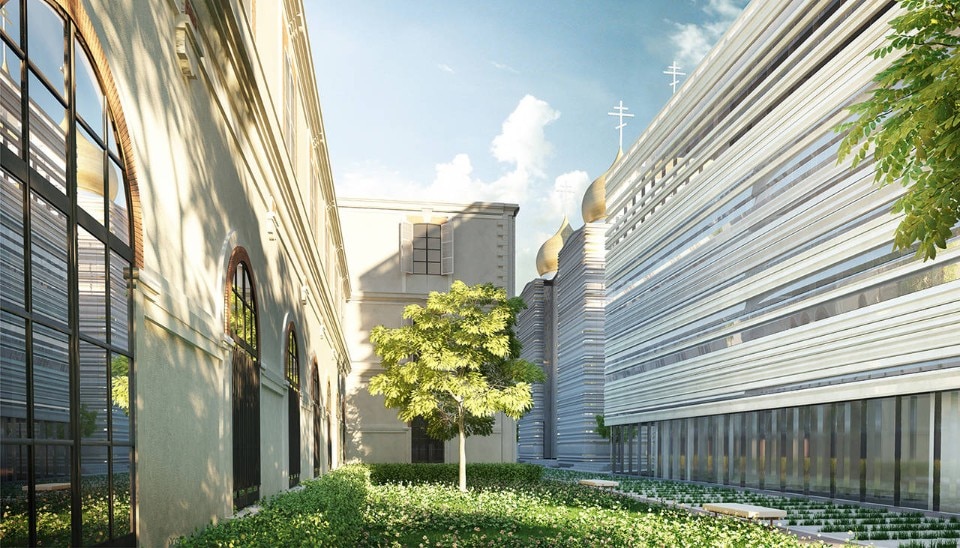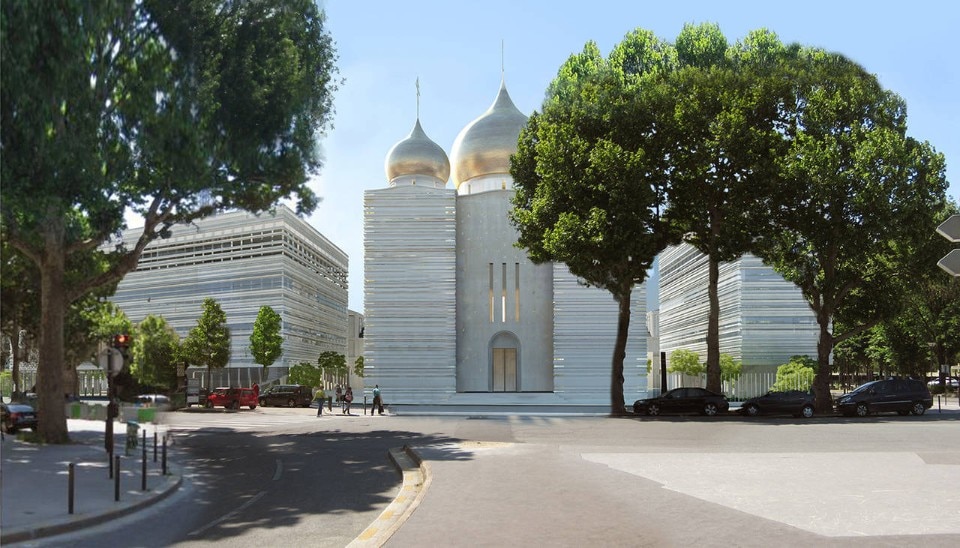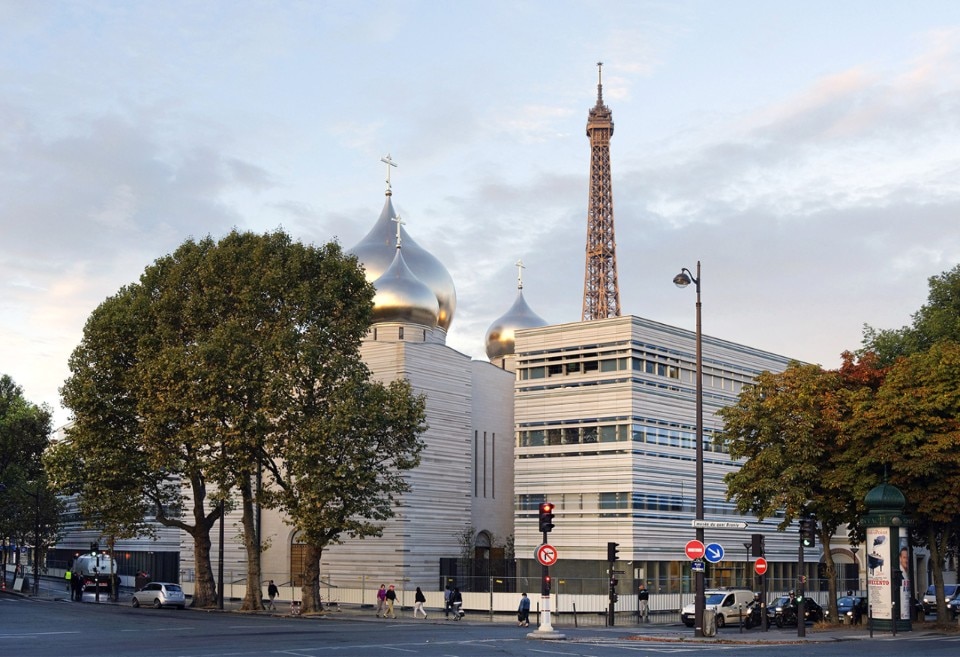At a time when the study of architecture, especially in American universities, is reckoning with the issue of power, and its most iconic figures are also being questioned – even Adolf Loos, who never had any money, what kind of power could he have had? – the case of the Russian Spiritual and Cultural Centre in Paris is particularly poignant. Not so much because it is the result of an international deal that unfolded during the neo-Gaullist presidency of Nicolas Sarkozy, now convicted of corruption, but because it shows that architecture is always the result of a compromise between divergent forces: economic, financial, cultural, ideological. There is not a single stone built in Venice during the Renaissance that is not the product of political and cultural conflict, as Manfredo Tafuri used to say. This is also true today, especially in international capitals such as Paris. It was here in 2007, that President Vladimir Putin decided to buy a valuable plot on the Seine, close to the Eiffel Tower, where state offices had previously stood, for more than seventy million euro. The huge investment had high visibility also given its proximity to the Trocadero and the Quai Branly Museum.

The architectural project was troubled. It began in 2006 with a competition won by the Spaniard Manuel Núñez Yanowsky. He was replaced, once the works were already underway, by Jean-Michel Wilmotte, who had to accept the anachronistic five-gilded onion domes, like St. Mark’s in Venice, and placed them on top of the stone-clad ethereal volumes of the church and cultural centre, creating a clashing ensemble – so much so that socialist then-mayor Bertrand Delanoë unsuccessfully objected to the project. The Russian government wanted a more loyal church than the existing cathedral of Saint-Alexandre-Nevsky, which was linked to the Ecumenical Patriarchate of Constantinople, and therefore too autonomous. Thus, Moscow obtained from the French government the unique privilege of extraterritoriality for the entire plot, which also includes conference halls, restaurants, accommodation for speakers and employees – in other words a small city within the city. It is precisely this privilege that is now the object of public debate, considering the numerous cases of poisoning of former agents or opponents such as Litvinenko, Politkovskaya, Skripal and Navalny. In fact, Russia’s reputation was much better in the early 2000s, but by the time of the inauguration in 2016 Putin had chosen not to take part in the celebrations. It was the time of the invasion of Crimea and the war in Syria, and therefore the height of his unpopularity in the West, so much so that the French authorities did not even show up.

Of course, such a strong symbol of the Russian regime at the centre of the European Union’s most important metropolis is a remarkable display of power. But upon closer examination, it is unlikely that the Orthodox Centre could become a base for the Russian secret services. It is, rather, a sign of French grandeur that it felt it could shun diplomatic custom and do things its own way – both with Sarkozy and with Emmanuel Macron who, for example, received the Egyptian President Abdel Fattah al-Sisi with great ceremony, ignoring the Giulio Regeni case, not to mention the disappearance and death in prison of his democratically-elected predecessor Mohamed Morsi. To be sure, this is not wholly unheard of: at the time of the American and British invasion of Iraq in 2003, the main mosque in Birmingham, the second largest city in the United Kingdom, still bore the golden sign “President Saddam Hussein Mosque”, after the man who had financed its construction in 1988, when he was still a great ally of NATO because of the war with Iran. Then, following the trend, in the summer it was more prudently renamed Jame Masjid (Major Mosque).

After all, Paris, like every metropolis, is a collection of islands – and not just the Cité or Saint-Louis: the Orthodox Centre will be the third Russian island in the capital. It’s completely different to the other two – the brutalist embassy on Boulevard Lannes, visually linked to the Soviet past, and the first, a symbol of the “petite Russie” in the 13th arrondissement, linked to the White Russia of the émigrées from the October Revolution, almost all of them taxi drivers at that time. These are nuances that perhaps can only be appreciated today outside of the country, where, after all, times have not changed that much since Vladimir Nabokov’s Pale Fire: “Ideas in modern Russia are machine-cut blocks coming in solid colors; the nuance is outlawed, the interval walled up, the curve grossly stepped”.
Ultimately, it is a shame that a place of worship and culture should remain off-limits to the general public. With the Institut du Monde Arabe, on the contrary, we had become used to the idea that a religion prejudicially considered closed could instead be an open place of meeting and exchange between different worlds within a luminous, aerial, ultra-modern architecture such as Jean Nouvel’s early masterpiece. But apparently the times and the programmes have changed completely.
Opening image: Wilmotte & Associés, Centro Russo Ortodosso, Paris, France. Credits Wilmotte & Associés


